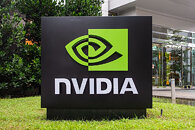Raevenlord
News Editor
- Joined
- Aug 12, 2016
- Messages
- 3,755 (1.21/day)
- Location
- Portugal
| System Name | The Ryzening |
|---|---|
| Processor | AMD Ryzen 9 5900X |
| Motherboard | MSI X570 MAG TOMAHAWK |
| Cooling | Lian Li Galahad 360mm AIO |
| Memory | 32 GB G.Skill Trident Z F4-3733 (4x 8 GB) |
| Video Card(s) | Gigabyte RTX 3070 Ti |
| Storage | Boot: Transcend MTE220S 2TB, Kintson A2000 1TB, Seagate Firewolf Pro 14 TB |
| Display(s) | Acer Nitro VG270UP (1440p 144 Hz IPS) |
| Case | Lian Li O11DX Dynamic White |
| Audio Device(s) | iFi Audio Zen DAC |
| Power Supply | Seasonic Focus+ 750 W |
| Mouse | Cooler Master Masterkeys Lite L |
| Keyboard | Cooler Master Masterkeys Lite L |
| Software | Windows 10 x64 |
In a recent ASUS investor call from March 17th, a company representative explained the company's financial outlook and what it sees as its successes and failures in Q42020. In it, the company referenced the lack of NVIDIA graphics cards to satisfy demand as one of the major hurdles it has had to face. As the company said, "Our guess is that the gap might have been caused by lower yields upstream. As for when [Nvidia] can increase that yield is something hard for us to predict."
This is likely the clearest indicator we've had since NVIDIA's RTX 30-series launch that there is more than a demand problem for NVIDIA's Ampere graphics cards - there's a yield one as well. NVIDIA could have simply failed to predict demand for its graphics cards in wake of the recent cryptomining craze, and asome theorize a miscalculated allocation of wafers with Samsung on expectations of lower demand post-holiday season. That one doesn't make much sense, as by that time, COVID and its effects on tech market demand were already pretty clear. And while NVIDIA certainly doesn't have all available capacity at Samsung's 8 nm at its disposal, there should certainly be more available capacity for NVIDIA's RTX 30-series than say, for AMD's Navi graphics cards, which have to share the 7 nm wafers with virtually all other AMD products (from CPUs to mobile chips to enterprise solutions). The idea of lower upstream yields than would be ideal for NVIDIA does certainly come as a possible reason - a change in foundry partner comes with certain additional difficulties in adapting the design to that given processes' strengths and issues. As always, we'll just have to wait and see.


View at TechPowerUp Main Site
This is likely the clearest indicator we've had since NVIDIA's RTX 30-series launch that there is more than a demand problem for NVIDIA's Ampere graphics cards - there's a yield one as well. NVIDIA could have simply failed to predict demand for its graphics cards in wake of the recent cryptomining craze, and asome theorize a miscalculated allocation of wafers with Samsung on expectations of lower demand post-holiday season. That one doesn't make much sense, as by that time, COVID and its effects on tech market demand were already pretty clear. And while NVIDIA certainly doesn't have all available capacity at Samsung's 8 nm at its disposal, there should certainly be more available capacity for NVIDIA's RTX 30-series than say, for AMD's Navi graphics cards, which have to share the 7 nm wafers with virtually all other AMD products (from CPUs to mobile chips to enterprise solutions). The idea of lower upstream yields than would be ideal for NVIDIA does certainly come as a possible reason - a change in foundry partner comes with certain additional difficulties in adapting the design to that given processes' strengths and issues. As always, we'll just have to wait and see.


View at TechPowerUp Main Site





 The scalpers are exploiting a pre-existing problem, they're not the source of it.
The scalpers are exploiting a pre-existing problem, they're not the source of it.
